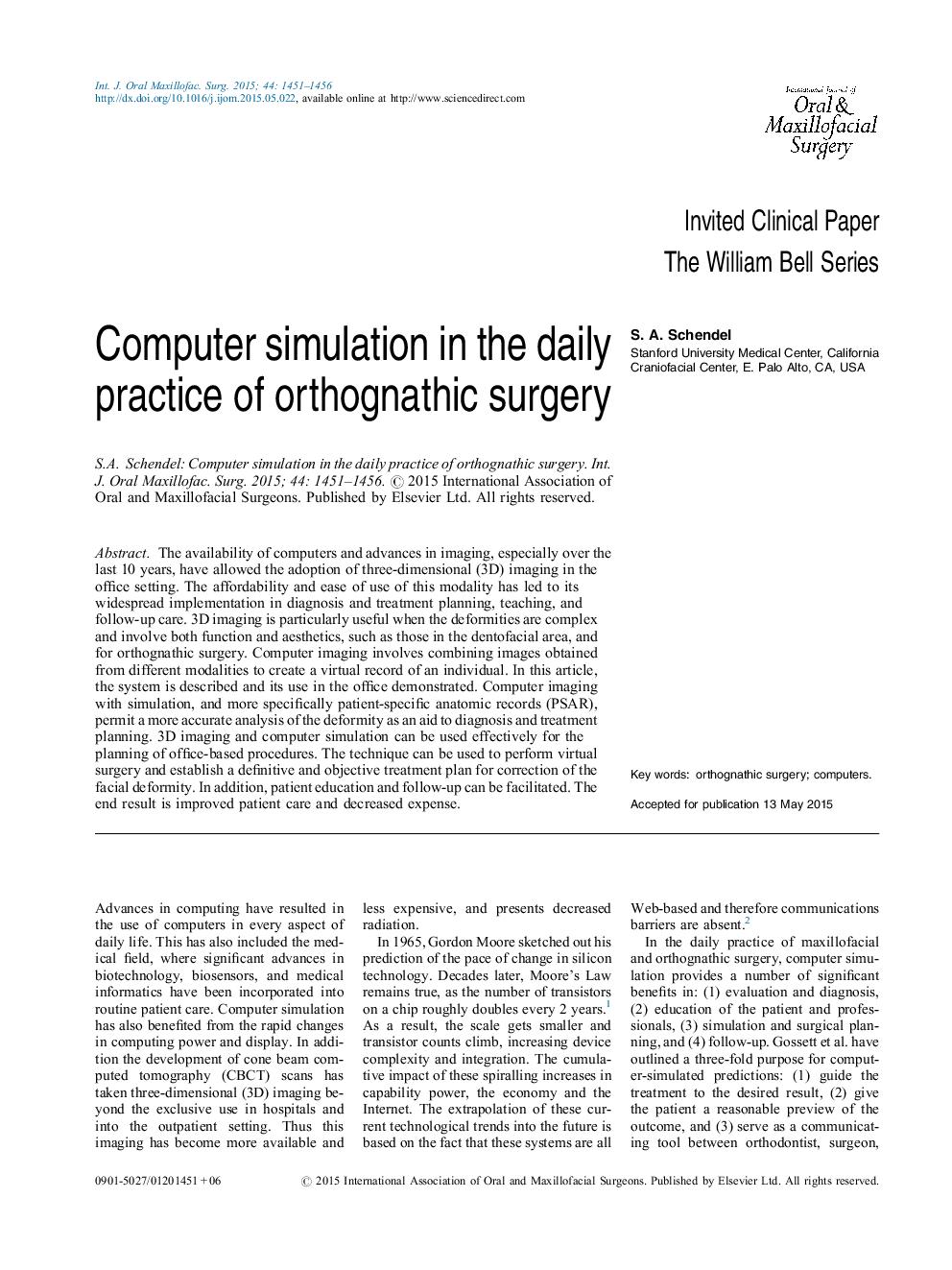| Article ID | Journal | Published Year | Pages | File Type |
|---|---|---|---|---|
| 6052367 | International Journal of Oral and Maxillofacial Surgery | 2015 | 6 Pages |
The availability of computers and advances in imaging, especially over the last 10 years, have allowed the adoption of three-dimensional (3D) imaging in the office setting. The affordability and ease of use of this modality has led to its widespread implementation in diagnosis and treatment planning, teaching, and follow-up care. 3D imaging is particularly useful when the deformities are complex and involve both function and aesthetics, such as those in the dentofacial area, and for orthognathic surgery. Computer imaging involves combining images obtained from different modalities to create a virtual record of an individual. In this article, the system is described and its use in the office demonstrated. Computer imaging with simulation, and more specifically patient-specific anatomic records (PSAR), permit a more accurate analysis of the deformity as an aid to diagnosis and treatment planning. 3D imaging and computer simulation can be used effectively for the planning of office-based procedures. The technique can be used to perform virtual surgery and establish a definitive and objective treatment plan for correction of the facial deformity. In addition, patient education and follow-up can be facilitated. The end result is improved patient care and decreased expense.
